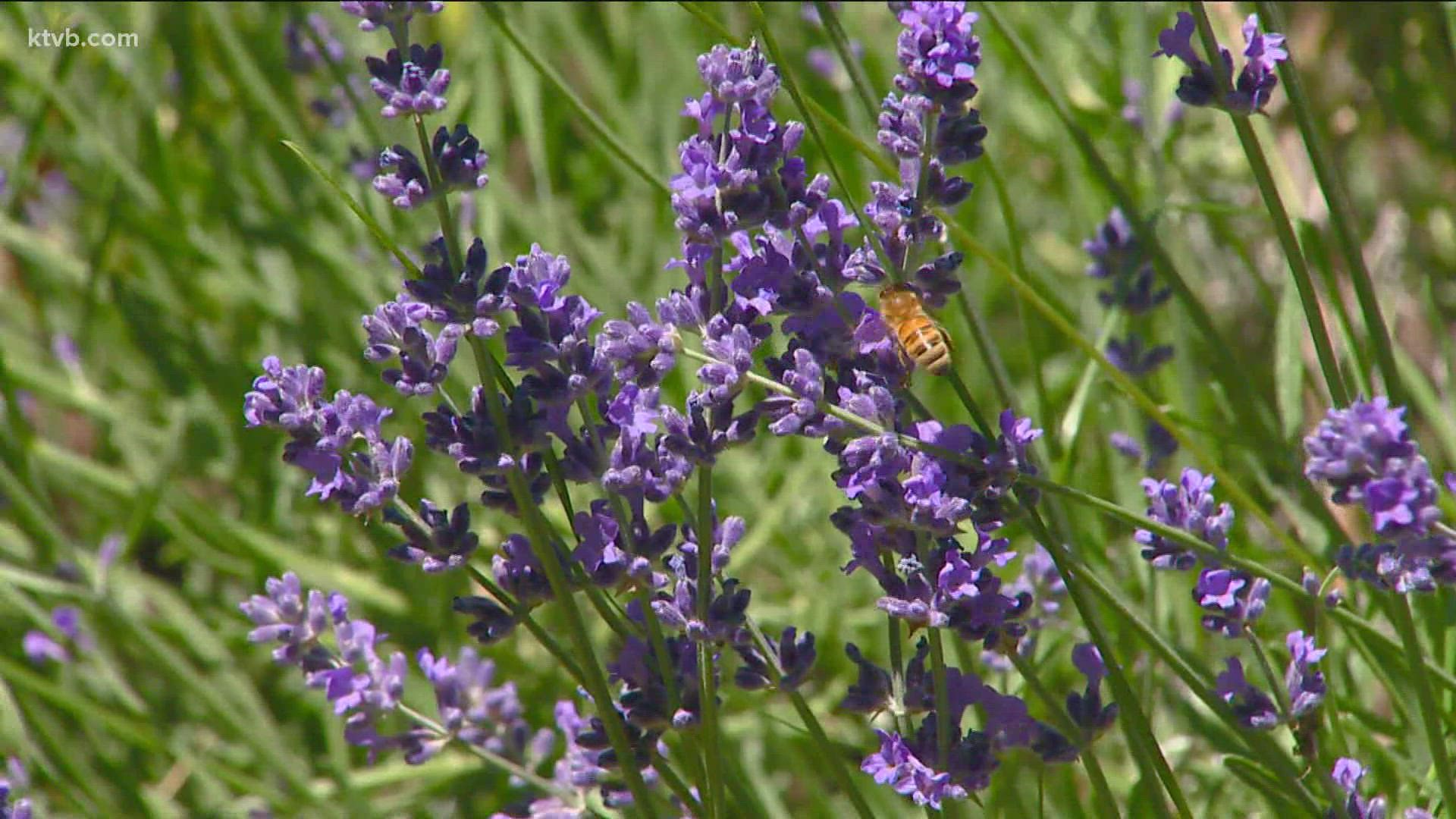BOISE, Idaho —
Growing a garden gives us some nice rewards, pretty flowers, fresh fruits, and vegetables, and it attracts wildlife to the yard like songbirds, hummingbirds, colorful butterflies, and even honeybees, but some of these creatures are in trouble and they need our help.
Learn how we can help endangered honeybees and monarch butterflies by doing a few simple things in our gardens and around the community.
A successful garden depends a good deal on the little pollinators that flutter and buzz around our plants, and so does a lot of our nation’s food supply. So, as people get started with their gardens this Spring, they might want to consider incorporating some things into the landscape that will help some of our endangered pollinator friends, like the honeybees and the monarch butterflies.
For years we've been seeing a drastic decline in the global honeybee population. Honeybees are essential pollinators, responsible for a very large part of our food supply. The widespread use of pesticides, combined with the natural effects of local severe winter weather, disease, and invasive predators like the varroa bee mites, have reduced bee colonies by as much as fifty percent in the last decade.
People can help the bees recover locally by doing a few simple things when starting their gardening this spring.
First, grow plants that attract and feed the bees. They love herbs like lavender and sage, as well as flowering bushes and trees. They rely on the nectar that they collect from their food, and along the way, they pick up pollen from the blossoms and flowers and spread them from plant to plant, which leads to the production of fruits and vegetables.
Also, back off on the use of pesticides and weed killers. Instead, try some organic and natural means for pest control.
Consider having your own set of beehives on your property. Beekeeping is a popular hobby, and you get the added benefits of increased pollination as well as delicious home-grown honey. Be sure to check for any local ordinances and restrictions on beekeeping where you live.
A great resource for beekeeping information and local support is the Treasure Valley Beekeepers Club.
If anyone happens to run across a beehive, or if bees are swarming near your yard, don't hurt the bees. Call the Treasure Valley Beekeepers Club and they will gladly come and collect the bees and give them a new safe home.
Another beautiful pollinator is the Monarch Butterfly. It happens to be Idaho's state insect, and its numbers have also been plummeting in recent years.
Droughts, the widespread use of pesticides and weed killers, and the loss of habitat are the main reasons for the monarch's decline here in the western U.S.
One of the biggest problems is the lack of a necessary food source, milkweed. Monarchs need milkweed, in fact, it is the only thing that young monarch caterpillars, which transform into monarch butterflies, will eat. However, these plants have been disappearing rapidly, eradicated from farm fields and public lands by weed killers and land development.
So how can people help the monarch? Plant some milkweed in your garden. It's not invasive, and it produces tall stalks with pretty pink flowers. The monarchs will lay their eggs on the milkweed, and when they hatch, the monarch caterpillars will eat the milkweed leaves. But don't worry -- they will not eat anything else in your garden.
The "Save Our Monarchs" foundation is a non-profit group that can provide all the information people need, as well as milkweed seeds for them to grow in their garden.
There is also a local monarch conservation project associated with the College of Western Idaho that can provide guidance and suggestions on how people can help monarchs recover here in Idaho.
Watch more You Can Grow It:
See them all in our YouTube playlist here:

